Timesheets by Tempo is the #1 time tracking app for Jira, providing teams with simplified and automated time tracking, accurate financial reporting, and the ability to log billable service hours.
The integration between Structure and Timesheets allows you to:
-
Add Tempo Logged Time data as columns in your structure, and aggregate that data across your hierarchy
-
Use billable time and worklog data in formulas
-
Organize your structure data based on Tempo accounts and Tempo teams

Don't have Timesheets? Try it for free!
Adding a Tempo Logged Time Column
Adding a custom Tempo Logged Time column to a structure allows you to easily track work time and billable hours alongside your project data, and aggregate those values up your hierarchy.
You can customize each Tempo Logged Time column to focus on specific time frames, users, billable time, and more:

-
Name - Give each Tempo Logged Time column a name specific to the data its displaying.
-
Period - Specify the time frame you want to include logged time data from.
-
Jira users - Select the users you want to include (the time displayed will be the sum of all selected users).
-
Teams - Select the Tempo teams you want to include (the time displayed will be the sum of all users within these teams).
-
Accounts - Select the Tempo accounts you want to include time logged data from.
-
Roles - Select the Tempo roles you want to include (the time displayed will be the sum of all users within these roles).
-
Billable time - When checked, only time marked Billable will be included in the column total.
-
Extended duration format - When checked, logged time will be broken down by contributor.
-
Sum over sub-items - When checked, logged time values will be aggregated up your hierarchy.
-
Exclude filtered items - When checked, filtered items will not be included in the aggregate total. If this is left unchecked, the values of those items will be included in the calculation, even though they are not visible in the structure.
You can make as many Tempo Logged Time columns as you need. For example, you could add one column to display all logged time, and another to display just billable hours, so you can easily compare the two.
Using Timesheets Data in Formulas
You can use Tempo Logged Time (tempoLoggedTime) and Tempo Billable Time (tempoBillableTime) within a formula to do calculations or comparisons based on your time tracking data.
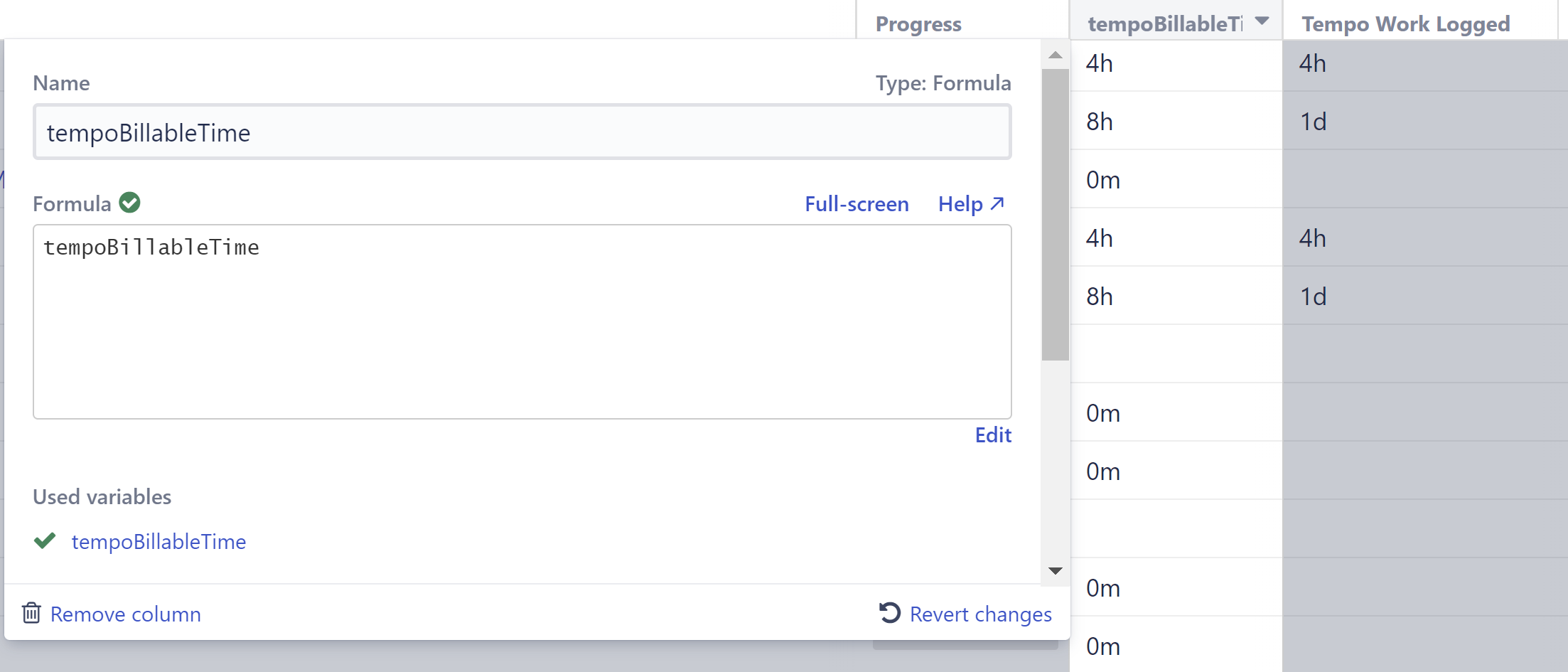
In the example above, we switched the formula’s Format to Duration. Otherwise, time values will be displayed in milliseconds.
Customizing Tempo Time Tracking Values
The values for the Tempo variables are the same as you would see in the Tempo Logged Time column with the following options selected:
-
Period = All Time
-
Users = All
-
Billable time option is selected
To customize these options, select the variable and adjust its settings:
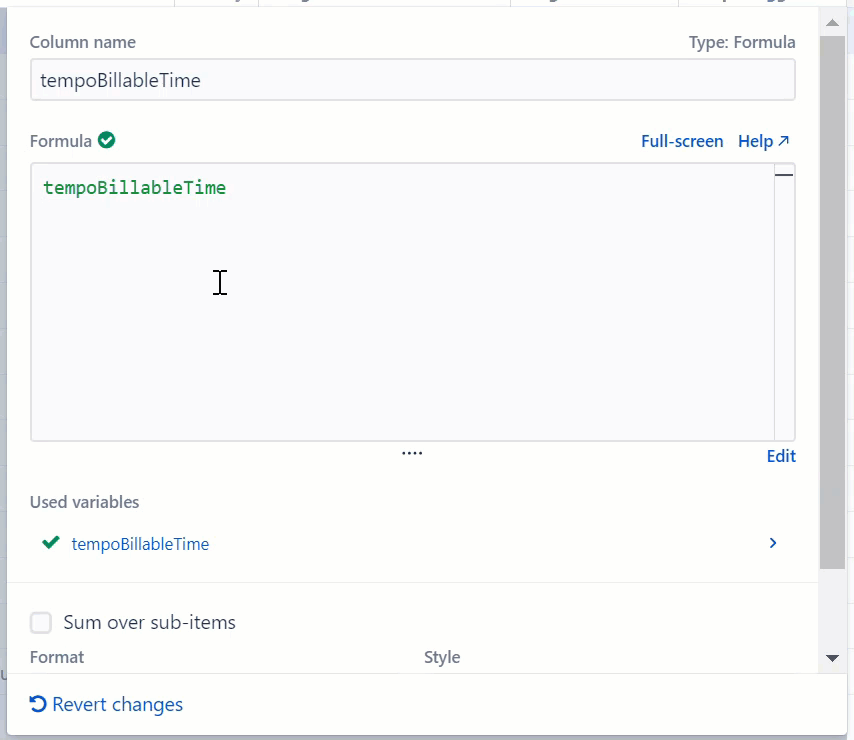
Using Worklog Properties in Formulas
You can also use the following Tempo worklog properties within a formula:
-
author
-
created
-
updated
-
comment
-
startData
-
started
-
timeSpent
-
billable
-
id
To use Tempo logged time properties in a formula, use the following format: tempoWorkLogs.author
Learn more: Item Properties
Using Tempo Work Attributes in Formulas
If you’ve created custom Tempo Work Attributes, these values can also be used in formulas: tempoworklogs.<WORKATTRIBUTEKEY> (Replace “<WORKATTRIBUTEKEY>” with the key for the work attribute you want to use.)
If you don’t know a work attribute’s key, create a column with the formula FLATTEN(tempoworklogs.workattributekeys)- this will provide a list of available work attribute keys.
Grouping by Tempo Accounts, Teams, or Contributors
You can group work items in your structure based on their Tempo account, team, or contributors.
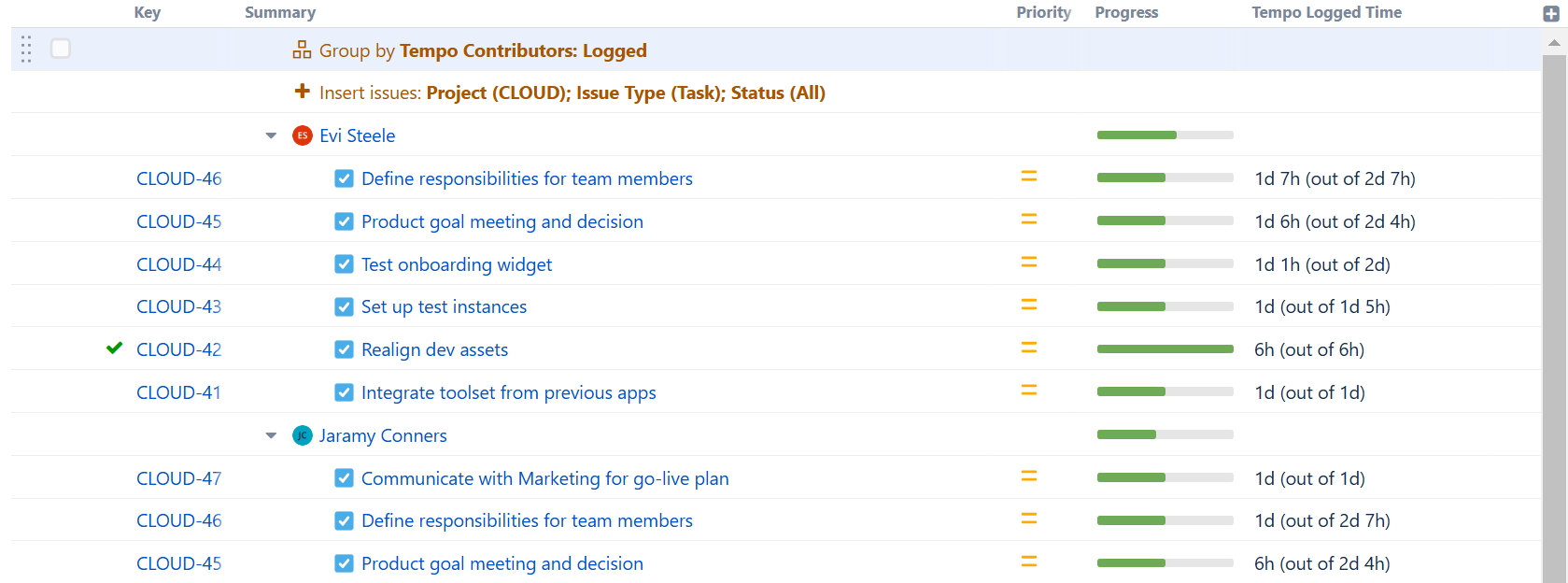
To do so, add a Group by Field generator (permanent) or Quick Group (temporary), and search for “tempo” in the Field dropdown.
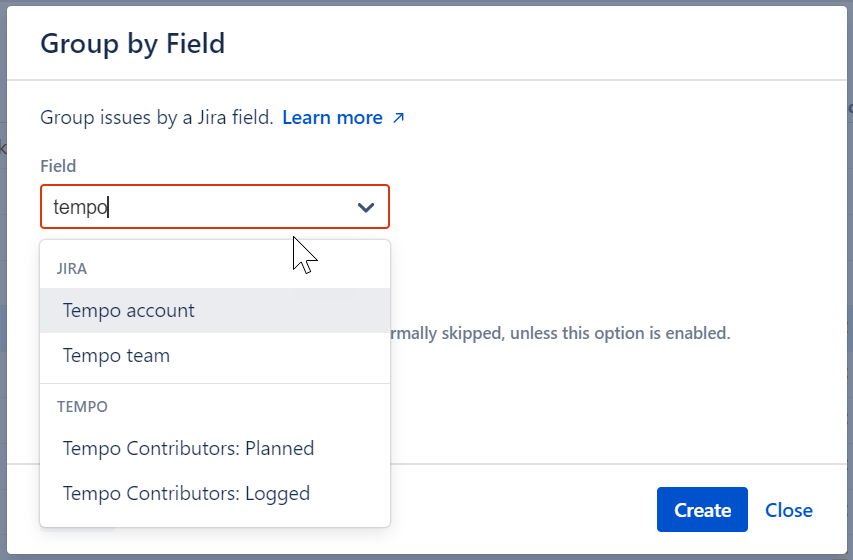
Connecting Structure and Timesheets
Before you can utilize Logged Time data in Structure, the Jira admin needs to connect Structure with Tempo. If you receive a "Configuration required" message, contact your Jira administrator.
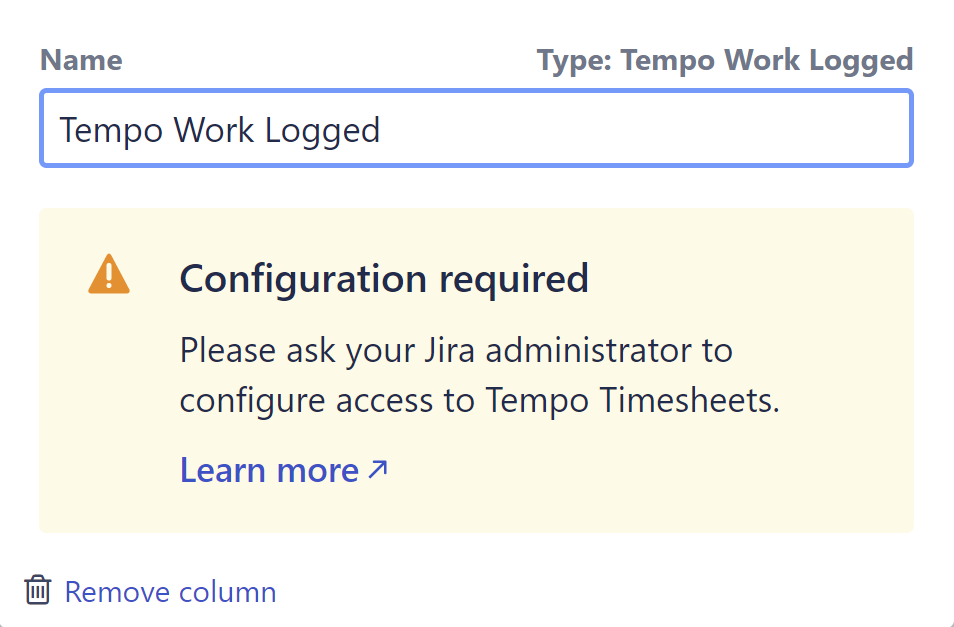
Troubleshooting
If you experience any problems adding or viewing a Tempo Logged Time column, refer to the following common troubleshooting tips.
-
Configuration Required - Ask your Jira administrator to connect Structure with Timesheets.
-
No data in the column - If you're not seeing any data in the column, or receiving an error message, check the following:
-
Is logged time data available for the Period you've selected? Try adjusting the period and see if you get any results.
-
Is there logged time data available for the Jira users you've selected? Try changing the selected users.
-
Do you have permission to view their logged time data? Try selecting just yourself.
-
-
Data doesn't match what others see - When viewing a shared structure, the results you see in the Tempo Logged Time column may differ from what someone else sees, if you have different permissions from them. For example, you may only be able to view time for your team members, while a portfolio manager may be able to view time across several teams.
